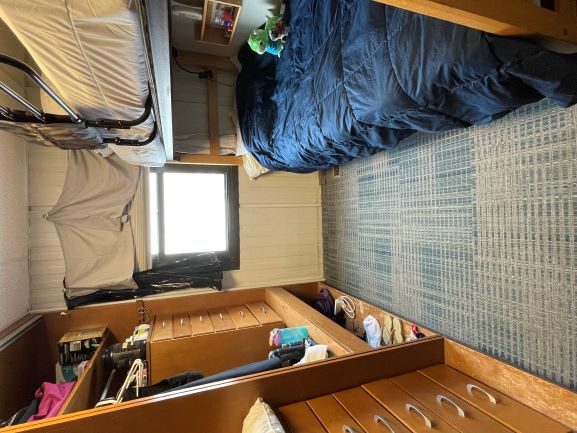 In my last post, I mentioned we typically do water chemistry in the morning and save the afternoon for dives and other activities. What are these other activities I spoke of? Read on if you’re wondering what’s the buzz and what’s a-happenin’ at Palmer.
In my last post, I mentioned we typically do water chemistry in the morning and save the afternoon for dives and other activities. What are these other activities I spoke of? Read on if you’re wondering what’s the buzz and what’s a-happenin’ at Palmer.
Last week the LMG came into port. When it left, it took many Palmer residents, including Addie and many of the friends I made at the station, with it. I really miss them, but I’m glad they get to go home and start their next adventures. I’m also glad that most of us still on station get our own rooms now that the population is smaller. I have moved into the bottom bunk so I can have more head space and don’t have to literally climb into bed.
Our water chemistry duties have also shifted slightly since Addie’s departure, with Hannah now taking over titrations and me picking up the daily bucket pH measurements after spectrophotometry. However, that still leaves plenty of hours in the day. How do we spend them on days when the weather does not allow us to get out diving?
One way is making resin art. First, we choose some extra algae specimens from dive collections, dab off excess water, and place them on a sheet of paper similar to dryer sheets for laundry. Then we use a paintbrush dipped in water to arrange the algae the way we want. Once we’re content with the layout, we put another sheet of paper on top of the algae, making a seaweed sandwich, then further sandwich those sheets with blotting paper to absorb more water. At the end of the session, we stack all the sandwiches into the plant press (sandwich-ception!), strap it down, and place it by the fan.
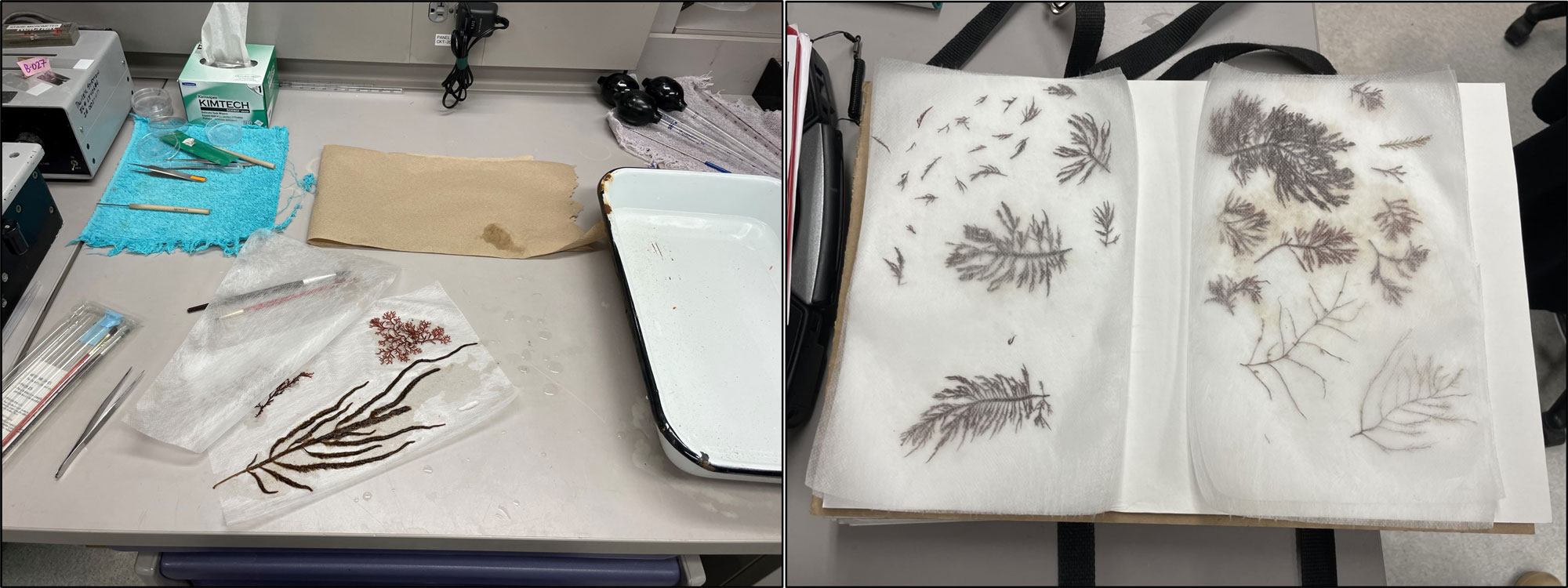 After a day or so, the algae are dry, and we can remove our arrangements from the press. Later, we can place pieces of the dried algae into molds and pour resin into the various shapes to make pendants, earrings, charms, magnets, or other decorative pieces.
After a day or so, the algae are dry, and we can remove our arrangements from the press. Later, we can place pieces of the dried algae into molds and pour resin into the various shapes to make pendants, earrings, charms, magnets, or other decorative pieces.
 Another crafting activity is screen printing. Marissa, one of the scientists on station, is also a talented artist and has made many silkscreen designs for screen printing. We tape down an article of clothing – usually a shirt – to a piece of cardboard and place the chosen silkscreen over it. One or two people press on the edges of the silkscreen while another person spreads paint over the design, then scrapes the paint away once it’s saturated. The silkscreen is then lifted up, revealing the design on the shirt. We blow-dry the shirts, leave them to dry fully overnight, then iron them. Below are some of the silkscreens and one of the shirts I made while experimenting with mixing paint colors. The design ended up a little faint, but I think it looks really cool, and it’s now one of my favorite shirts.
Another crafting activity is screen printing. Marissa, one of the scientists on station, is also a talented artist and has made many silkscreen designs for screen printing. We tape down an article of clothing – usually a shirt – to a piece of cardboard and place the chosen silkscreen over it. One or two people press on the edges of the silkscreen while another person spreads paint over the design, then scrapes the paint away once it’s saturated. The silkscreen is then lifted up, revealing the design on the shirt. We blow-dry the shirts, leave them to dry fully overnight, then iron them. Below are some of the silkscreens and one of the shirts I made while experimenting with mixing paint colors. The design ended up a little faint, but I think it looks really cool, and it’s now one of my favorite shirts.
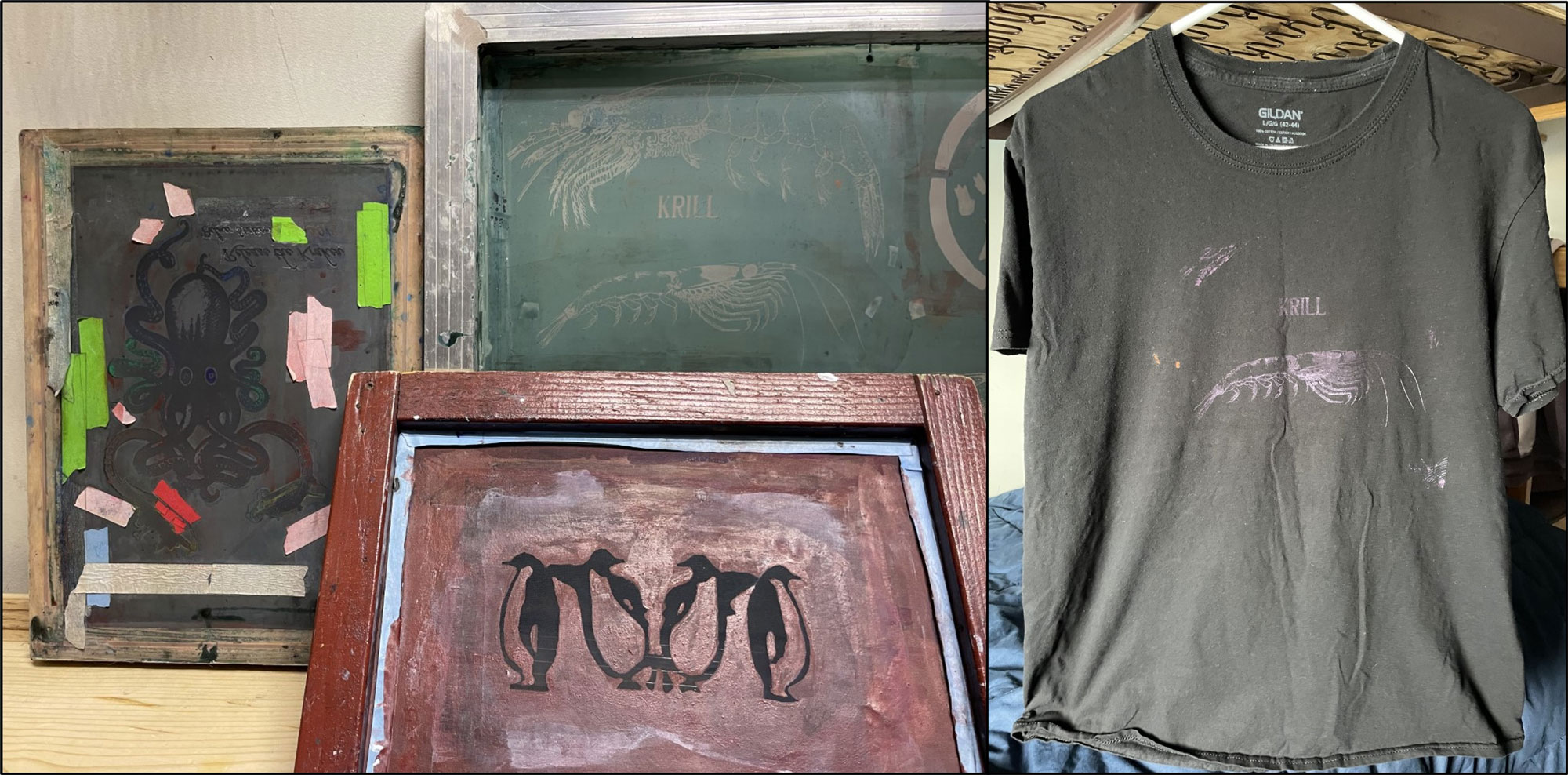 As Addie mentioned in a previous post, the whiteboard near the galley shows what’s going on for the week – updates, meetings, science talks, movie/TV/game nights.
As Addie mentioned in a previous post, the whiteboard near the galley shows what’s going on for the week – updates, meetings, science talks, movie/TV/game nights.
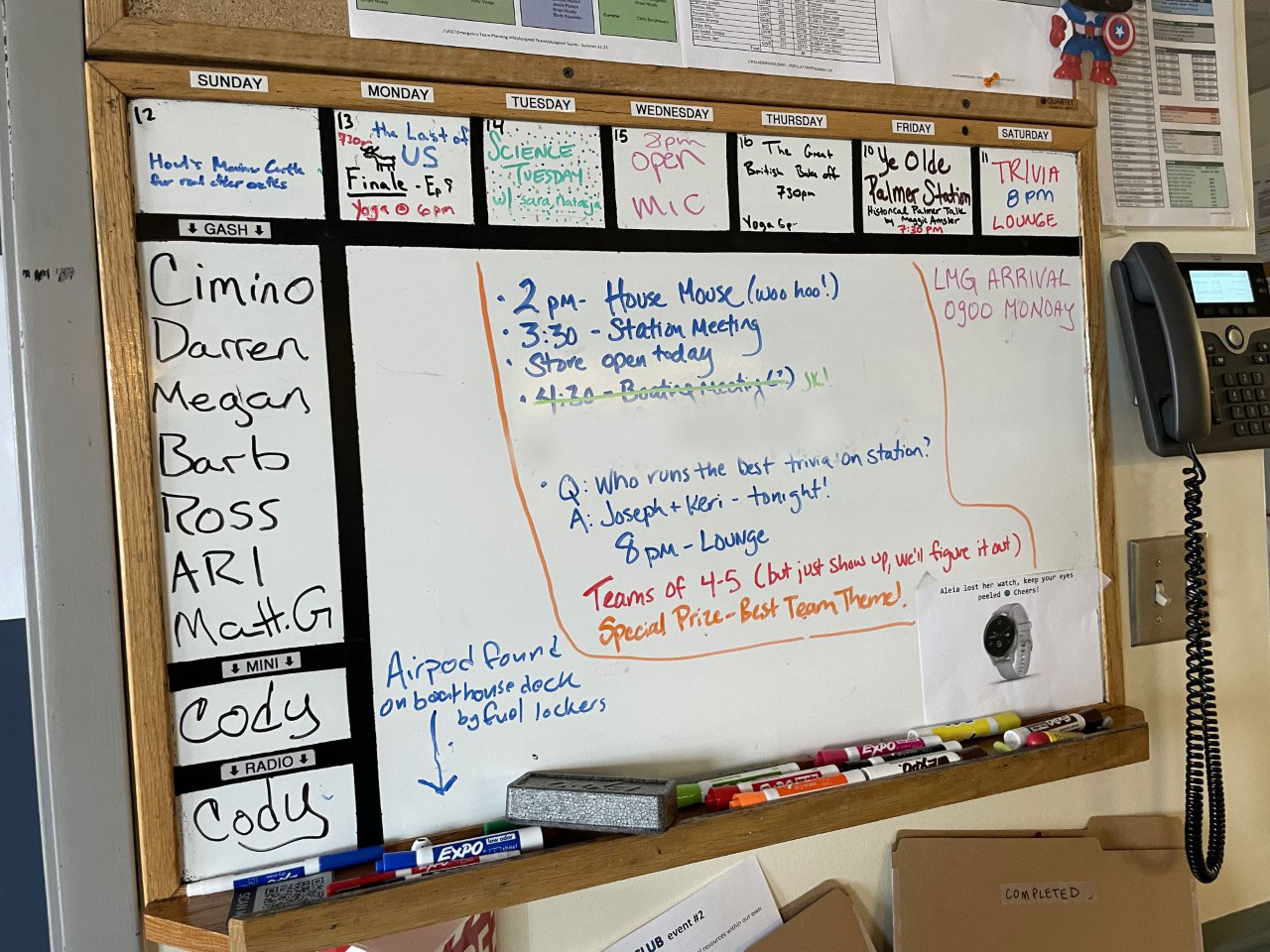 As Addie mentioned in a previous post, the whiteboard near the galley shows what’s going on for the week – updates, meetings, science talks, movie/TV/game nights.
As Addie mentioned in a previous post, the whiteboard near the galley shows what’s going on for the week – updates, meetings, science talks, movie/TV/game nights.
The Minecraft and Pokemon Go communities were big here, at least until last week. Though they never did manage to successfully recruit me to the former, I did enjoy playing multiplayer video games on Nintendo Switch, watching The Last of Us, and playing board games. Pictured below is an original board game currently in development by one of my Palmer friends.
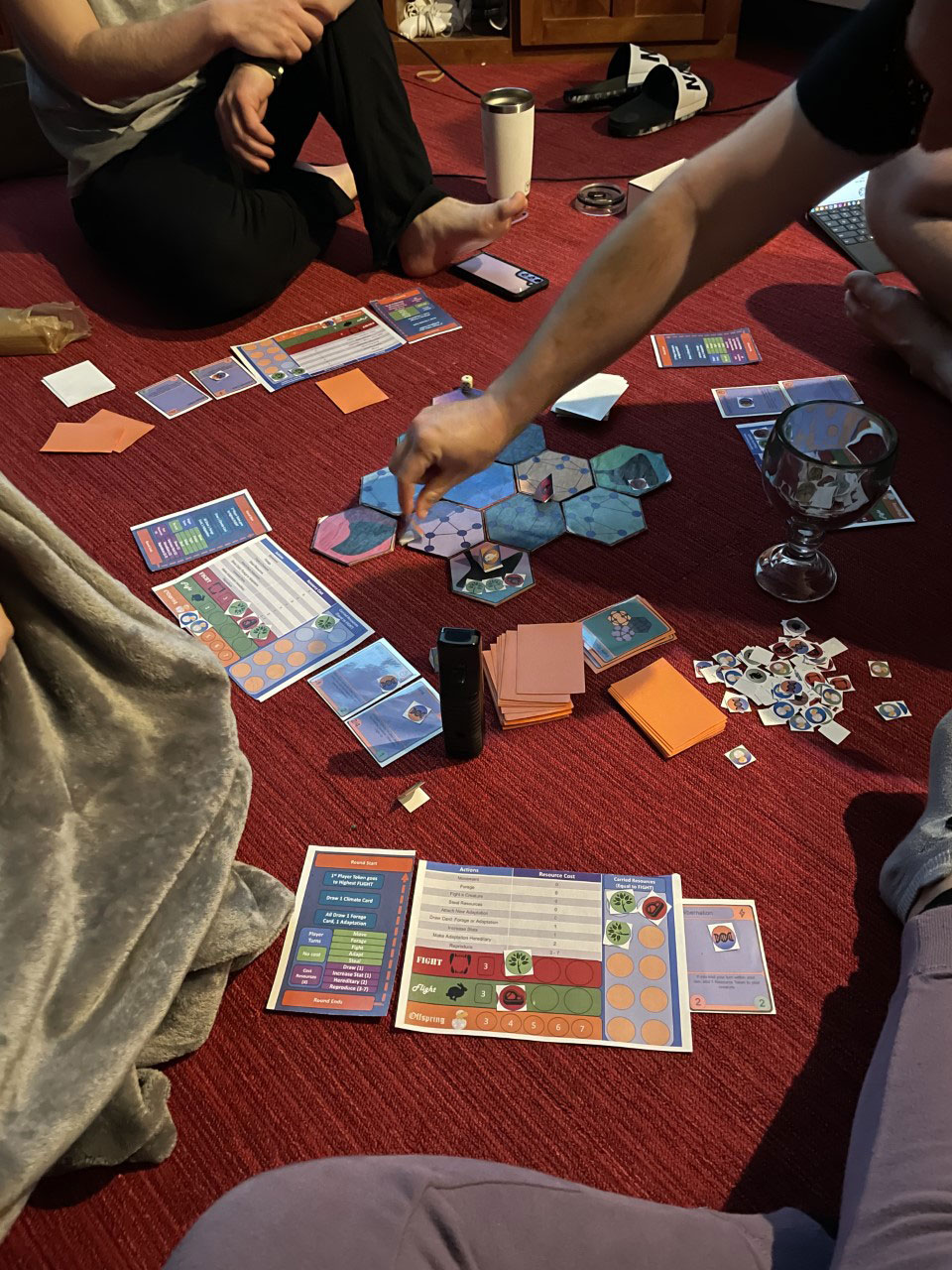 People also often post signups on the whiteboard, such as for resin art sessions or rec boating groups.
People also often post signups on the whiteboard, such as for resin art sessions or rec boating groups.
I joined a recreational boating adventure to Jacobs Island, where we saw several fur seals basking in the sun and tons of skuas (a sea gull relative). We had taken a bit of a tour around the islands near station on the way, and the sun was already low in the sky when we arrived, so after a bit of exploring and taking in the views, we hightailed it back to station to make it to the dock before boating hours ended. As we whizzed through the water in the Zodiac, sea breeze and sun hitting our faces, all I could think was “it doesn’t get much better than this.”
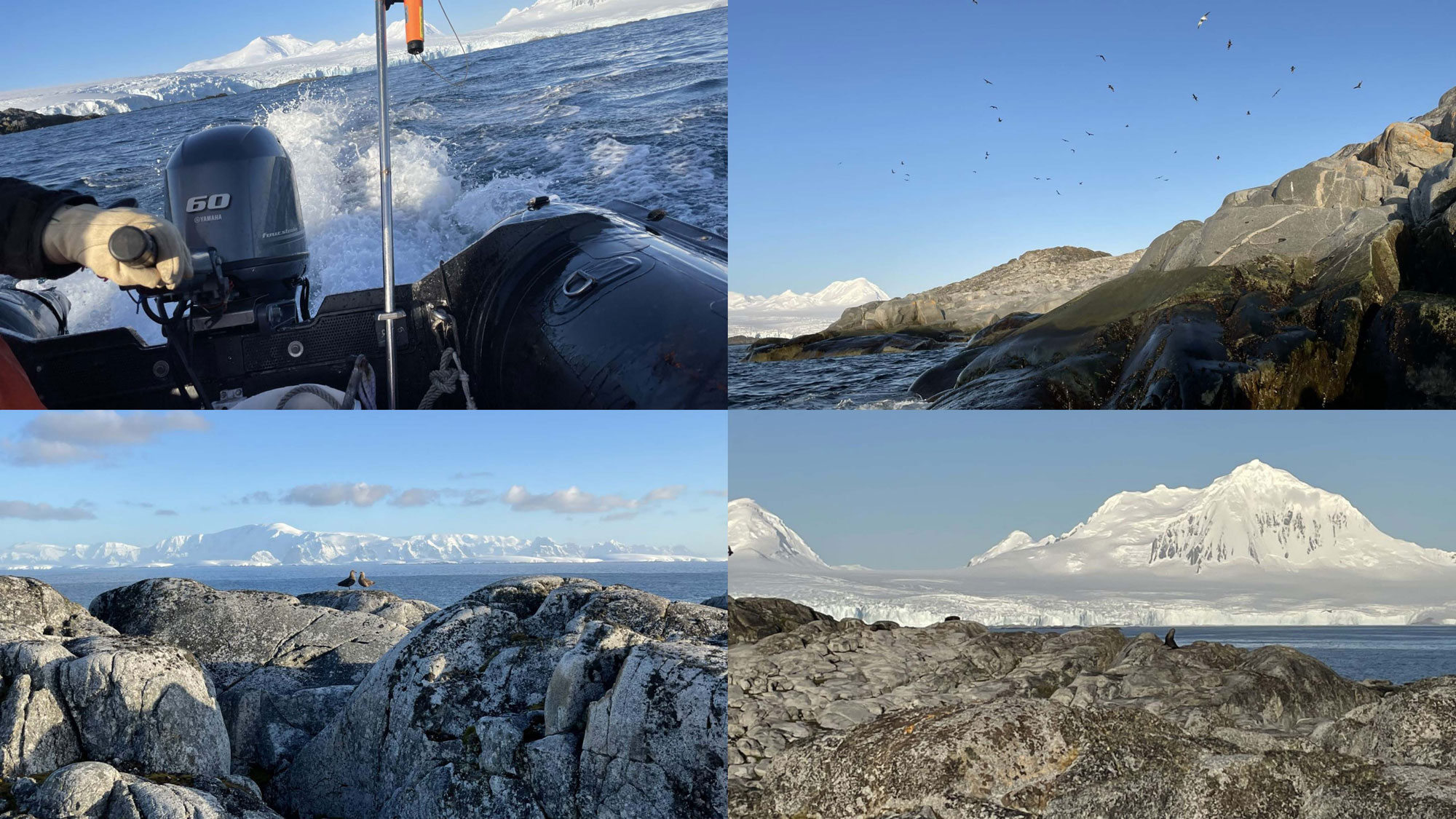 Luckily, I get plenty of boating time as a dive tender. Yep, that’s right – we’ve already got all the algae and amphipods we need for the experiment, but we still go out for dives several times a week for related projects.
Luckily, I get plenty of boating time as a dive tender. Yep, that’s right – we’ve already got all the algae and amphipods we need for the experiment, but we still go out for dives several times a week for related projects.
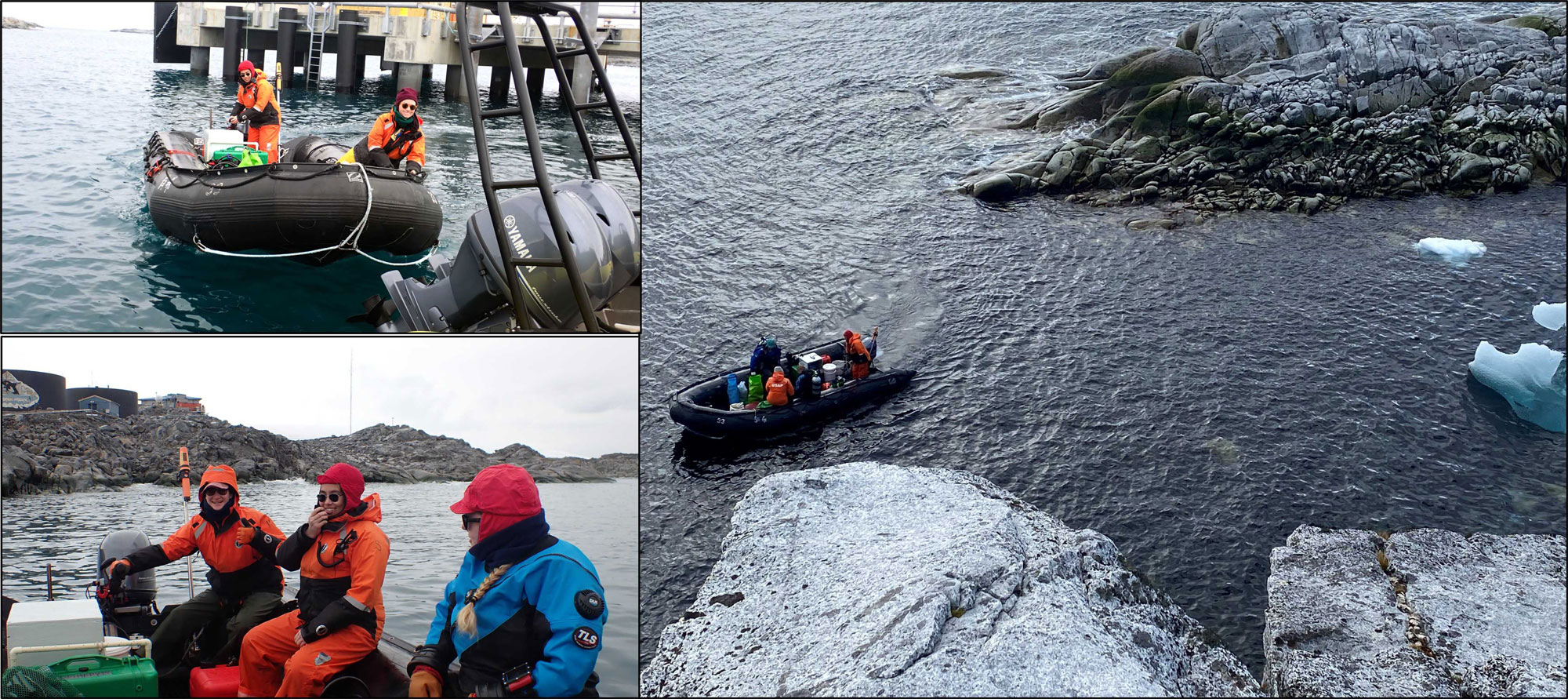 What are the divers doing? Plus, don’t tell me these are the only things to do on station!
What are the divers doing? Plus, don’t tell me these are the only things to do on station!
Well, I guess you’ll just have to stay tuned for future posts.
Any questions or comments send to